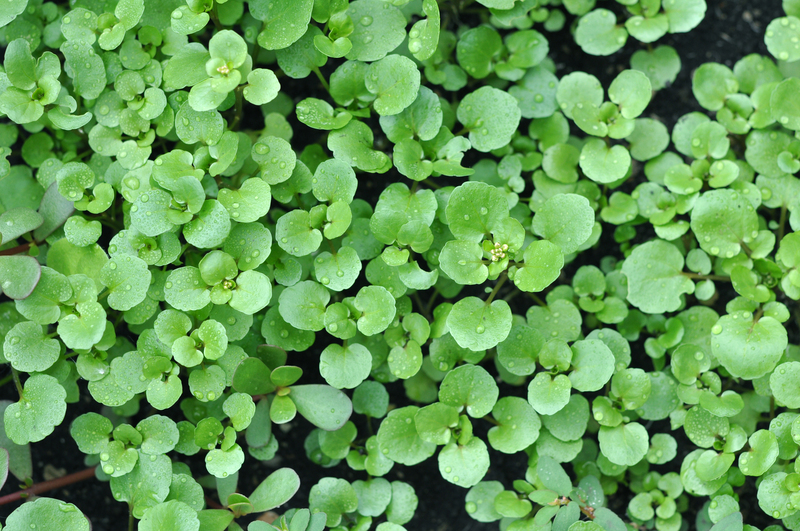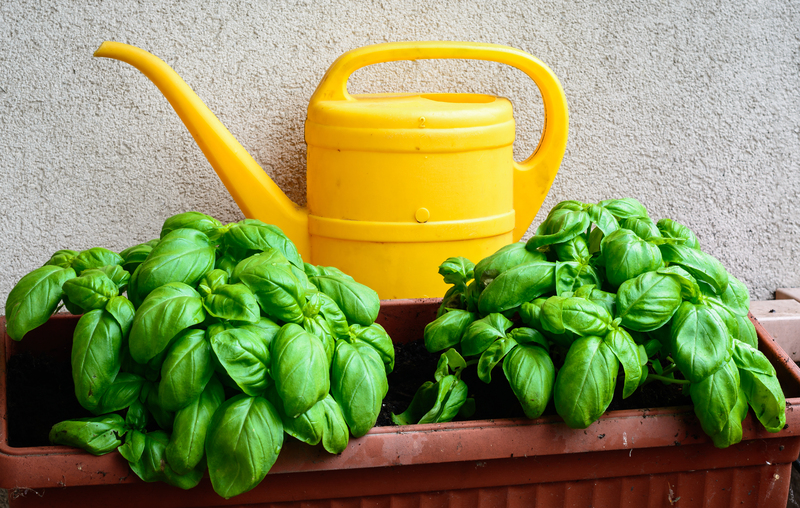Container gardening for beginners: What to know
Posted on 20/09/2025
Container Gardening for Beginners: What to Know
Container gardening is an increasingly popular way to grow everything from beautiful flowers to delicious vegetables, especially if you have limited outdoor space. Whether you live in a small apartment or simply want to enhance your patio, container gardening for beginners offers a flexible, manageable way to dive into gardening. In this comprehensive guide, we'll cover everything you need to know to start your own container garden and keep it thriving throughout the seasons.
Why Choose Container Gardening?
Container gardening appeals to people of all ages and abilities. Here's why this method is a favorite among beginner and seasoned gardeners alike:
- Space-saving: Perfect for balconies, patios, small yards, or even indoors.
- Flexibility: Move your plants to capture sunlight or protect against harsh weather.
- Control: Manage soil quality, drainage, and pests more easily than in traditional gardens.
- Accessibility: Raised containers reduce bending and kneeling--ideal for people with mobility issues.
- Creativity: Experiment with unique pots, color themes, and plant combinations for visual interest.

Choosing the Right Containers
One of the first steps in beginner container gardening is selecting suitable pots or planters. Your choice of containers affects plant growth, aesthetics, and maintenance requirements.
Material Matters
- Terracotta: Classic and breathable, but can dry out quickly and crack in freezing weather.
- Plastic: Lightweight, affordable, and moisture-retentive, but may not be as stylish.
- Ceramic/Glazed: Attractive and durable, but heavier and often more expensive.
- Metal: Sleek and modern, but can heat up rapidly in sunlight and harm roots.
- Wood: Natural look and provides insulation, but may rot over time if not treated.
Choosing Size and Shape
When starting your container gardening journey, remember that bigger is often better for most plants. Larger containers retain moisture better and have more space for root growth. However, make sure the container fits your available area and is portable if you need to move it.
Always ensure your chosen pots have adequate drainage holes to prevent waterlogging, which can lead to root rot and other problems.
Selecting Alluring Plants for Containers
Not every plant is suitable for growing in pots. Here are some popular choices for beginner container gardeners:
Best Edible Plants for Container Gardening
- Herbs: Basil, mint, parsley, thyme, oregano, chives.
- Salad Greens: Lettuce, spinach, arugula, Swiss chard.
- Tomatoes: Cherry or dwarf varieties perform best.
- Peppers: Both hot and sweet peppers grow well in pots.
- Radishes and carrots: Choose shorter or round types for containers.
- Strawberries: Look for varieties bred for pots or hanging baskets.
Top Ornamentals for Beginner Gardeners
- Petunias, pansies, and impatiens: Vibrant and easy to grow.
- Geraniums and marigolds: Hardy and colorful.
- Calibrachoa and million bells: Spilling flowers ideal for hanging displays.
- Succulents: Low-maintenance and drought-tolerant.
- Small shrubs and dwarf evergreens: Adds structure to container gardens.
The Right Soil Mix for Container Gardening
The secret to healthy container plants is a top-notch growing medium. Unlike ground soil, which may be too dense or harbor pests, you need to use a lightweight, well-draining potting mix for your containers.
- Potted plants thrive best in commercial potting soil specifically designed for containers.
- Avoid using garden soil, which tends to compact and suffocate plant roots in pots.
- Look for a mix that includes organic matter like peat moss or coconut coir, perlite or vermiculite for aeration, and compost for nutrients.
- For specialty plants such as succulents or orchids, purchase potting mixes tailored to their needs.
Fertilizing Tips
Container-grown plants use up nutrients faster than those in the ground. Applying a slow-release granular fertilizer when planting, and supplementing with liquid fertilizer every few weeks keeps your plants flourishing.
How to Water Your Container Plants
Proper watering is make-or-break in beginner container gardening. Here's what you need to keep in mind:
- Check soil moisture: Stick your finger an inch deep. If it feels dry, it's time to water.
- Water deeply: Saturate the soil until you see water draining from the bottom.
- Don't let pots sit in standing water: This causes root rot and plant decline.
- Consider the climate: In hot, windy weather or during summer, you might need to water every day. In cooler seasons, check less frequently.
*Tip: Use pots with a water reservoir, or add mulch on top of the soil to reduce evaporation.
Providing the Best Light for Container Gardens
Every plant has its own light requirements. Before you buy your plants, observe your space and note how many hours of sunlight it receives. Most edibles and flowering annuals require at least 6 hours of direct sun each day. Shade-tolerant plants like ferns or impatiens do well with less.
If gardening indoors or in a shaded area, consider supplementing with grow lights for better results.
Arranging and Designing Your Container Garden
Designing a container garden is where you can truly get creative. Whether aiming for ornamental beauty, edibles, or a mixture of both, good arrangement will maximize the impact of your containers.
The "Thriller, Filler, Spiller" Formula
- Thriller: A tall plant for height and drama (e.g., ornamental grass or upright flower).
- Filler: Bushy, medium-height plants to fill out the arrangement (e.g., marigolds, geraniums).
- Spiller: Trailing plants that spill over the pot's edges (e.g., sweet potato vine, trailing lobelia).
This classic formula creates balanced, eye-catching displays.
Arrange containers in groups for visual interest, using odd numbers and varying heights. Play with color combinations for extra appeal.
Seasonal Container Gardening Tips
Early Spring
- Plant cool-tolerant greens, pansies, and bulbs for early color.
- Refresh soil in existing containers for a strong start.
Summer
- Switch out spring bloomers for heat-loving annuals, vegetables, or herbs.
- Monitor water and fertilizer needs as growth and evaporation increase.
Autumn
- Swap tired summer plants for mums, ornamental peppers, or fall cauliflower.
- Keep watering, as pots dry out even in cool weather.
Winter
- Plant evergreens or cold-hardy perennials for year-round appeal.
- Cluster containers near the house for protection from freezing temperatures.
- If using terra cotta or ceramic pots, move indoors to prevent cracking.
Basic Maintenance and Troubleshooting
- Deadheading: Remove spent blooms to encourage more flowers and tidy appearance.
- Pruning: Trim back leggy plants to keep them healthy and shapely.
- Check for pests: Aphids, spider mites, and slugs can be an issue. Treat with insecticidal soap or pick off by hand.
- Monitor for disease: Look for yellowing leaves, mold, or rot; promptly remove affected plants or leaves.
The beauty of having a container garden is that you can change out plants easily if something stops performing or if you want a new look.
Common Mistakes to Avoid in Container Gardening
- Overcrowding: Plants need air circulation, light, and root space.
- Improper drainage: Always use pots with holes. Add stones or broken pottery to the bottom if needed.
- Under- or over-watering: Learn the needs of your plants and check soil before watering.
- Ignoring sunlight requirements: Shade lovers will fry in direct sun, while sun lovers will languish in the shade.
Benefits of Container Gardening for Beginners
- Low commitment: Try your hand at gardening without a major investment or back-breaking labor.
- Accessible for all ages: Great for kids, seniors, and anyone with mobility concerns.
- Urban and small-space friendly: Perfect for city dwellers or those with limited yard space.
- Quick results: Many container plants mature rapidly, especially annuals and herbs.
- Personal expression: Express your style with colors, shapes, and container choices.
Creative Ideas for Your First Container Garden
- Windowsill Herb Garden: Grow basil, parsley, and chives in small pots for fresh flavors at your fingertips.
- Salad Bowl Planter: Mix assorted greens in a single wide, shallow pot for "pick-and-eat" salads.
- Vertical Gardens: Use wall planters or tiered stands to maximize space and create living art.
- Pollinator Pots: Plant lavender, salvia, and marigolds to attract bees and butterflies.
- Edible Flowers: Nasturtiums, pansies, and calendula add color and are edible, too.

Frequently Asked Questions about Container Gardening
Can I reuse potting soil from last year?
Yes, but refresh it by removing some old soil, mixing in new potting mix, and adding compost or a slow-release fertilizer since nutrients deplete over time.
How do I keep my container plants from drying out too quickly?
- Use larger containers to retain more moisture.
- Add a layer of organic mulch, like straw or bark chips, over the soil surface.
- Water in the morning or evening to reduce evaporation.
What are the best vegetables for beginners to grow in pots?
- Lettuce, spinach, radishes, bush beans, dwarf tomatoes, and peppers are fast, forgiving, and productive in containers.
Conclusion: Start Your Container Garden Today!
Container gardening is a rewarding, flexible, and surprisingly easy approach to growing plants. Whether you want fresh herbs at your window, vibrant flowers on your balcony, or homegrown veggies on your patio, container gardening for beginners opens up a world of possibilities. With the right soil, suitable containers, and a little care, you'll soon be harvesting fresh produce or admiring your own floral displays. Start with a few pots, keep experimenting, and enjoy the ever-changing beauty that container gardening brings--no matter your experience level or the size of your space.



